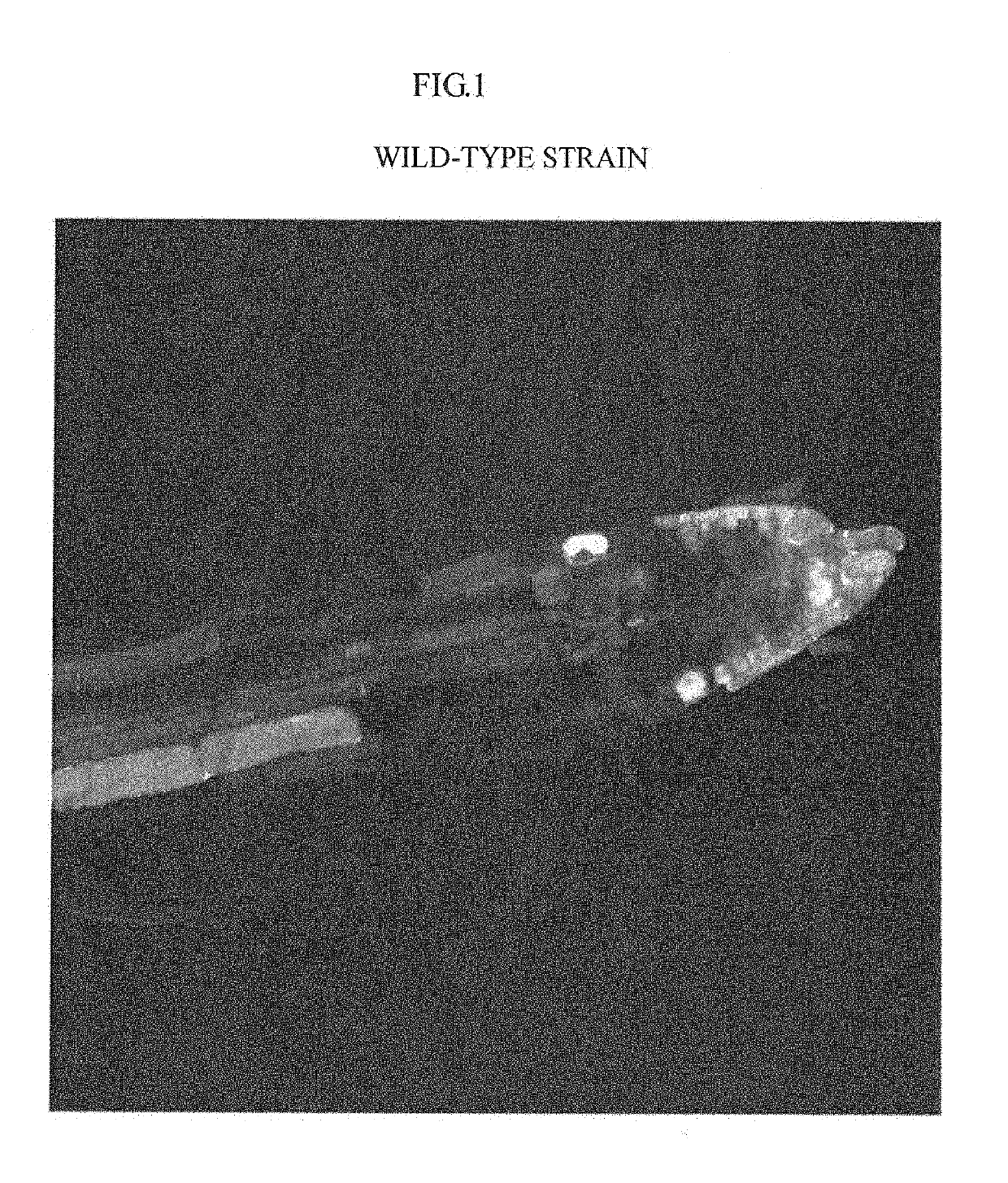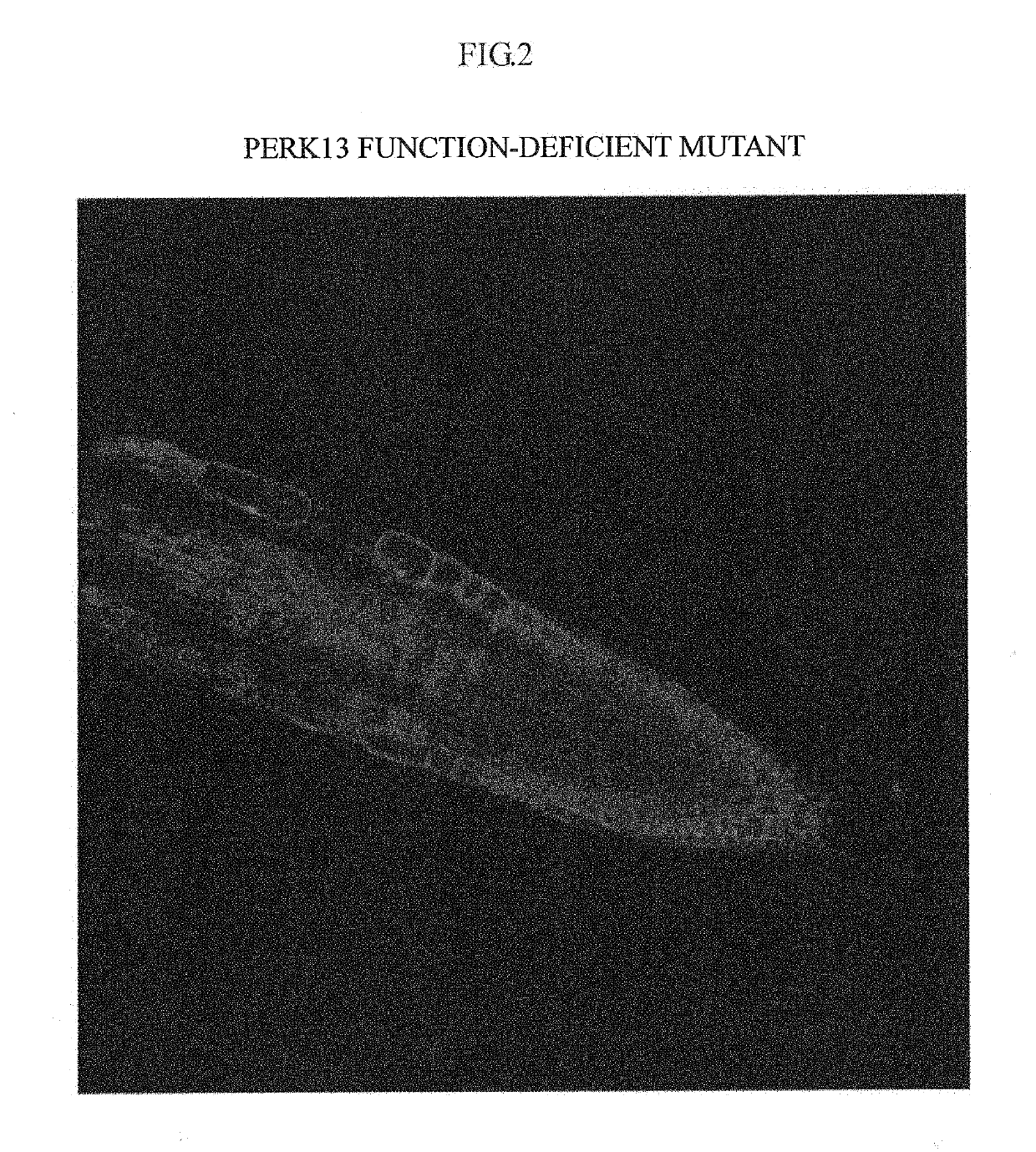Method for improving salt tolerance of plant
a plant salt tolerance and plant technology, applied in the field of plant salt tolerance improvement, can solve the problems of water shortage becoming a serious problem, and most plants cannot be grown under high salt concentration conditions, so as to and improve the salt tolerance of plants.
- Summary
- Abstract
- Description
- Claims
- Application Information
AI Technical Summary
Benefits of technology
Problems solved by technology
Method used
Image
Examples
example 1
[0070]A library of mutants of Arabidopsis thaliana into which random mutations had been introduced was screened for mutants with improved salt tolerance, and genes contributing to the improvement of salt tolerance were searched. For this screening, microorganisms belonging to the genus Paenibacillus were used. Paenibacillus bacteria promote the influx of sodium chloride into the cells of Arabidopsis thaliana. For this reason, Arabidopsis thaliana coexisting with the Paenibacillus bacteria withers and dies even in an environment of 0.5% by mass sodium chloride, which normally would not cause Arabidopsis thaliana to wither and die. Exploiting this characteristic, the screening was performed to identify genes that can improve salt tolerance even in the presence of Paenibacillus bacteria.
[0071]First, seeds of Arabidopsis thaliana (Col-0) were treated with EMS (ethyl methanesulfonic acid) to prepare a mutant library into which random mutations were introduced. The seeds of this library w...
example 2
[0076]Two strains out of the four strains confirmed in Example 1 to be mutants deficient in the PERK13 function were cultivated under an environment of 1.5% by mass sodium chloride, and the salt tolerance was evaluated.
[0077]Specifically, the seeds were sterilized with hypochlorous acid and then sown on a gel plate medium of MS medium. Then, hydroponic cultivation was carried out with at least the bottom of the gel flat plate medium being in contact with a liquid medium for hydroponic cultivation. The liquid medium used was a ½ MS medium. With respect to each of the mutants, 24 seeds for each sodium chloride treatment and 24 seeds for control treatment were sowed. When the germinated plants had become two weeks old, sodium chloride with a final concentration of 1.5% by mass was added to a plant as a target for sodium chloride treatment, and hydroponic cultivation was further carried out for another 1 week. A plant for control treatment was further hydroponically cultivated for anoth...
example 3
[0079]With respect to the PERK13 function-deficient mutants, the amount of sodium in roots was examined for one of the two strains examined for salt tolerance in Example 2.
[0080]Specifically, the seeds were sterilized with 70% ethanol and hypochlorous acid and then sown on a gel plate medium of 1% sucrose-containing MS medium. Then, hydroponic cultivation was carried out in a growth chamber with at least the bottom of the gel flat plate medium being in contact with a liquid medium (½ MS medium). The operation conditions of the growth chamber were as follows: temperature of 25° C., illuminance of 5000 lux, light period of 16 hours, and dark period of 8 hours. 10 to 14 days after germination, the liquid medium in contact with the bottom of the gel plate medium was changed to a ½ MS medium containing sodium chloride at the final concentration of 1.0% by mass, and hydroponic cultivation was further carried out for another 6 to 24 hours to apply salt stress to the plants. The plants for ...
PUM
| Property | Measurement | Unit |
|---|---|---|
| Fraction | aaaaa | aaaaa |
| Percent by mass | aaaaa | aaaaa |
| Concentration | aaaaa | aaaaa |
Abstract
Description
Claims
Application Information
 Login to View More
Login to View More - R&D
- Intellectual Property
- Life Sciences
- Materials
- Tech Scout
- Unparalleled Data Quality
- Higher Quality Content
- 60% Fewer Hallucinations
Browse by: Latest US Patents, China's latest patents, Technical Efficacy Thesaurus, Application Domain, Technology Topic, Popular Technical Reports.
© 2025 PatSnap. All rights reserved.Legal|Privacy policy|Modern Slavery Act Transparency Statement|Sitemap|About US| Contact US: help@patsnap.com



